Incredible Homes From Around the World
What happens when architects challenge conventional thinking of what a house should be? Their creativity results in incredible homes that amaze all who see them.
We've found a set of houses that are as far as we can imagine from the stereotype of 4 walls, a pitched roof, front door and rectangular windows. Our only condition for being considered for entry into our list was that they can be lived in now. We were taken aback by how many of our initial discoveries that ruled out - many turned out to be grand concepts that only existed as artist's impressions.
We’ve listed them in different categories, and sifted through dozens to nominate contenders and pick winners in each. In keeping with the spirit of the houses, we kept our criteria pretty flexible. We've tried to share our reasons for picking the winner of each category, but often we simply liked them best!
We hope you enjoy looking through the incredible homes as much as we enjoyed putting the lists together.
1. Narrow Homes
We felt claustrophobic just looking at some of these incredibly narrow homes. We couldn't imagine what would it be like to live in a house like every day. We wondered what it would do to one’s sense of perspective and overall emotions.
Nominated: The Wedge, Britain

The Wedge Front Door via dailymail.co.uk
The first in our list is from the UK. As the Daily Mail headline put it, at 47 inches wide at the front, there really isn’t room to swing a proverbial cat.
The effect is emphasised by the slim front being filled by a positively anorexic door and window, instead of using the whole space for a wider door.
The good news for the folks living there is that its wedge shape means it gets wider as you go further in, so the bedroom is virtually normal in appearance.
The Wedge is on the picturesque Isle of Cumbrae in Scotland.
It was previously in the Guinness Book of Records, but has since been displaced by our Polish winner, listed further down.

The Wedge Bedroom via dailymail.co.uk
Nominated: Riverside Home, Japan
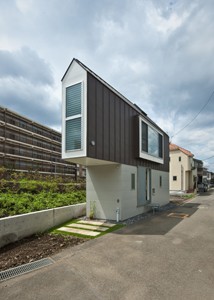
Japanese Narrow Home Designed by Mizuishi. Photo by Hiroshi Tanigawa ©Mizuishi Architect Atelier
This cute but functional home was designed by creative Japanese architect Mizuishi.
We love how so much has been done to make the inside feel spacious. And externally they've managed to squeeze in a carport and balcony!
The architect says he put a lot of thought into building several relationships between the house and the river.
This was especially relevant for the positioning of glass around the building, including the skylights.
Perhaps the most surprising thing about this entrant is that its original occupants were not a single person or young couple, but a family of three.

Japanese Narrow Home Designed by Mizuishi. Photo by Hiroshi Tanigawa ©Mizuishi Architect Atelier
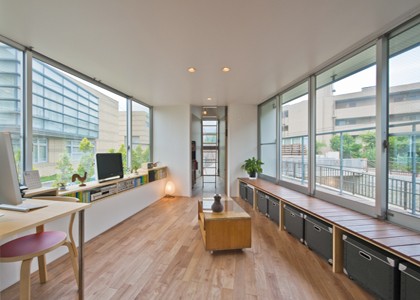
The inside of the home. Photo by Hiroshi Tanigawa ©Mizuishi Architect Atelier
Winner: The Keret House, Poland
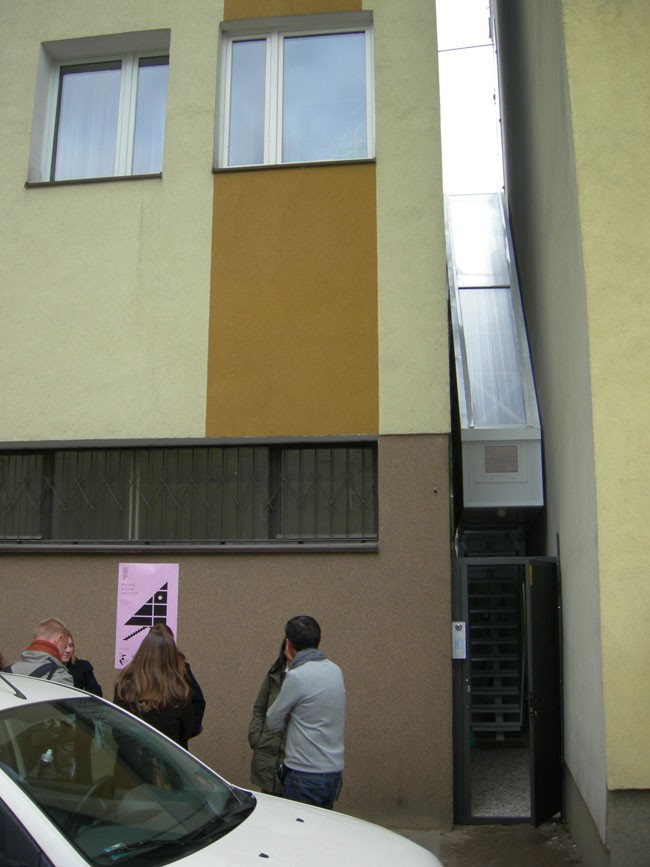
The Keret House © www.shabbat-goy.com
A home and an art installation, the Keret House in Poland holds the current record for the world’s narrowest home.
It's not surprising we felt claustrophobic looking at it. At its narrowest it’s 92cm (3ft) and the widest span is 152cms (5ft).
It was designed by architect Jakub Szczęsny with Centrala, an architecture firm. Its name comes from the first tenant, Israeli film maker and author, Etgar Keret.
Keret house is meant to be a temporary abode for travelling writers. We're pretty sure the size doesn’t encourage overstays!
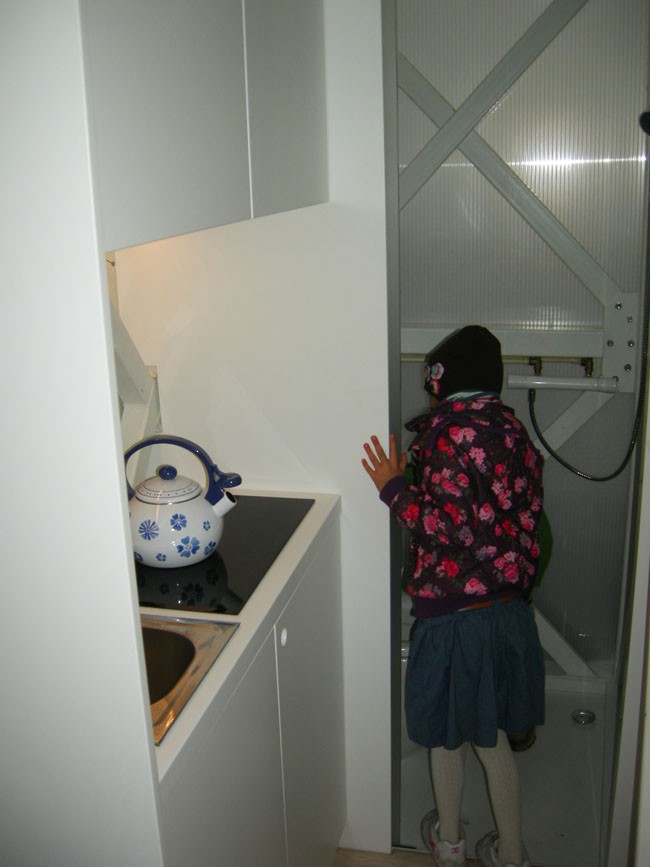
The Keret House © www.shabbat-goy.com

The Keret House © www.shabbat-goy.com
2. Underground Homes
This category is about man-made houses built underground. It took us a few moments to get our heads around the difference between these and the Cave Homes in our next category. To those in the know, it's a fundamental distinction.
Man-made houses built underground are also known as Earth Houses. They have a great sustainable angle to them as well. According to Wikipedia, an Earth House is
“an architectural style characterised by the use of natural terrain to help form the walls of a house. An earth house is usually set partially into the ground and covered with thin growth.
So it's within the rules of this category to build modern Earth Houses with concrete walls and insulations.
Nominated: Alpine Earth House, Switzerland

Earth house by Peter Vetsch via Wikimedia Commons
This house by Swiss architect Peter Vetsch is a great example of an Earth House.
There is a group of these incredible homes in Dietikon, Switzerland. All of them reflect the architect's belief in energy efficiency. The construction allows them to use the natural insulation of the terrain in which they're built, and as a result it is reported that they use less than half the energy of a normal home.
As well as being environmentally responsible, Peter also believes in developing architecture beyond the boredom of traditional designs. And it sure does come through!
Each house contains between 3 and 7 bedrooms, modern facilities, and are even served by an underground carpark and artificial lake.
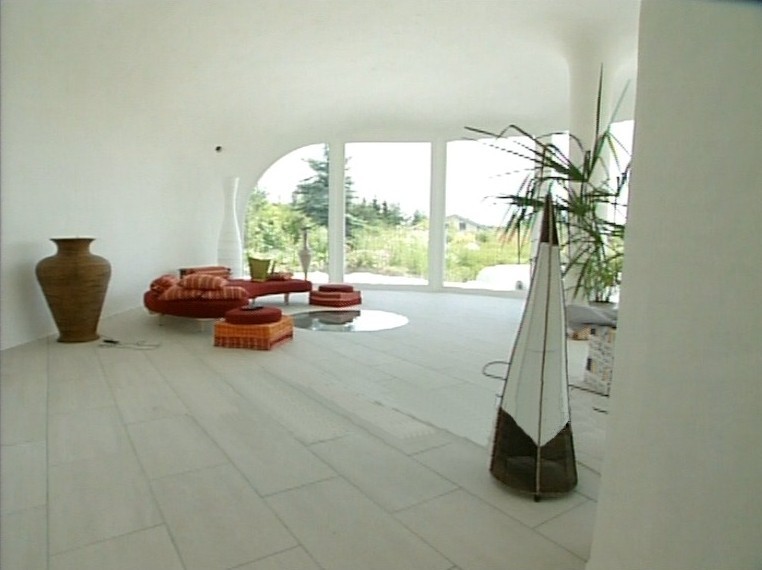
Interior of Earth house by Peter Vetsch via Wikimedia Commons
Nominated: Malator, Britain
Malator is an Earth House in the town of Druidston in Wales. It was built in 1998 and designed by the erstwhile architecture firm, Future Systems (of the late Jan Kaplicky and Amanda Levete) for Bob Marshall-Andrews, former British Member of Parliament.
Despite being an underground home, Malator has a wonderful sense of light and space, and the architects have done an impressive job of retaining the "must-haves" most people look for in a desirable home.
It is affectionately known as the "Teletubby house" by locals, because the steel chimney is reminiscent of the children's TV programme of the same name.

Malator © Cered
Winner: Underground House, UK
The winner of our Earth House section doesn’t need heating, even in the winter. It's in quarry in Cumbria (in the north of England), where it was designed by local architect, John Bodger.
It's a local landmark in the town of Great Ormside, and is featured on the VisitCumbria website.
It's a two story house with incredible views, and has been the subject of a national UK TV programme.
If you click on the image above, you can watch the Youtube video copy of the Channel 4 programme Grand Designs, which tells the story of the construction over a five year period.
The owners talk about their learnings from the exercise, and clearly love their amazing home.
3. Cave Homes
Cave homes conjured up for us a picture of cavemen living in dark, damp, primitive conditions. But this couldn't be further away from the reality. These incredible homes have electricity and the other essentials, and enjoy natural temperature regulation from the caves.
Nominated: Kandovan Cave Houses, Iran
These cave houses are built into volcanic rocks, a material which is easy to work on to create windows and doors, yet sturdy enough to have lasted for several hundred years.

Kandovan, Iran © Fabien Dany - www.fabiendany.com
Nominated: Altiplano de Granada Cave Houses, Spain
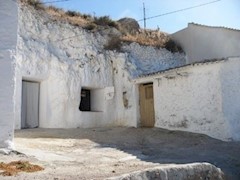
Spain has a region of carved cave houses in the region of Altiplano de Granada.
Some of these go back several hundred years, but the majority were built in the 1800s by peasants.
The main reason for so many of these is because of rocks created from eruptions in an ancient sea.
A well-lit cave is very affordable by European standards - under 20,000 Euros. If you're interested, you can find Spanish cave houses like these in local classified adverts.
Winner: Cappadocia, Turkey
This is a region where cave houses go back about five thousand years.
While this area is now a historic site, some areas are used as hotels, while others contain underground villages with elderly inhabitants who have been living there all their lives.
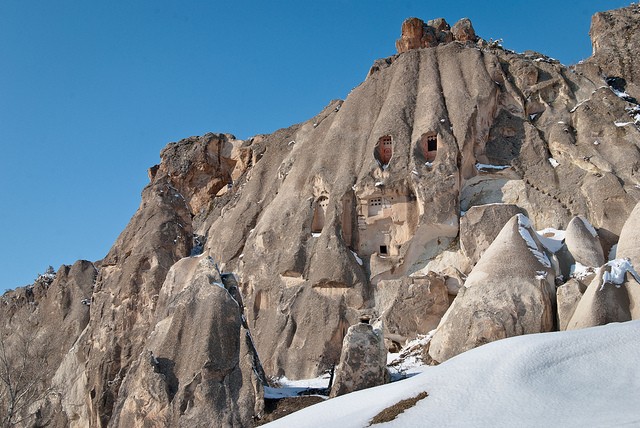
Cappadocia, Turkey © Steve Fu
4. Rock Homes
From caves to rocks, a natural transition in our list. This category is about large, natural rocks used to construct or support houses, or that are cut into to create yet another form of incredibe home.
Nominated: Boulder-roofed House, Mexico
A house made from a rock isn't a typical dream come true, but for one man that's exactly what this is. The owner spent years working out how he could make this large boulder into the roof of his home. When he could finally afford the project, he bought a remote piece of land and built his lifetime dream to live in.
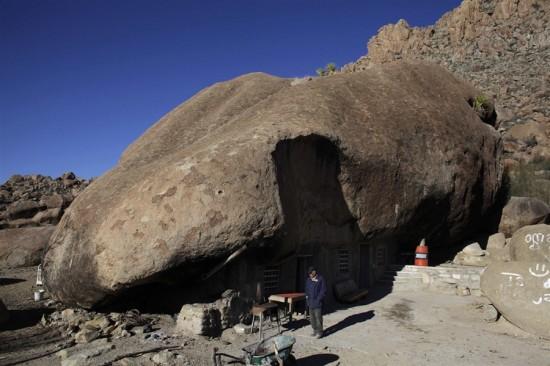
Rock roof house, Mexico © Daniel Becerril/REUTERS
Nominated: Stone House, Portugal
This cute house was constructed by linking two giant rocks with a concrete mix. There are rumours that it was inspired by the Flintstones cartoon, and we'd love for that to be true. Full marks for creativity!
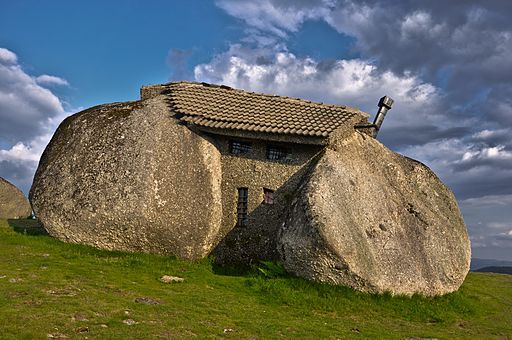
Casa de Penedo by Pablo García Chao via Wikimedia Commons
Winner: Sassi di Matera, Italy
The collective winner of our rock home category is a set of incredible homes from Sassi di Matera. They hold a record for being the only place where people have been continuously living for the last 9,000 years.
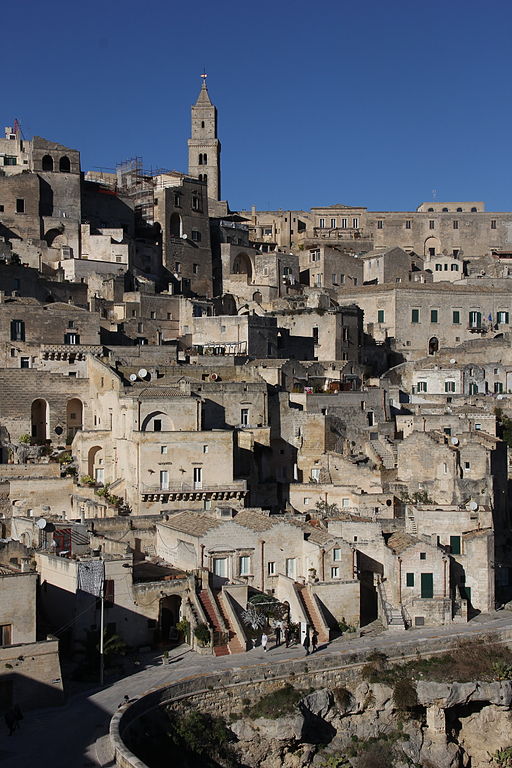
Sassi de Matera by Mattis via Wikimedia Commons
5. Floating Homes
From land to water for our next category, as we switch to incredible homes on water. The category was originally for permanently floating homes, otherwise known as houseboats. But we decided to stretch the definition to include homes built on land but designed to float during flooding. We also excluded luxury yachts. No real logic, just personal bias!
Nominated: Sascha Akkerman's Houseboat, Holland
We discovered many fantastic houseboats, but eventually chose a minimalist design to kick off our shortlist. We loved carpenter and designer Sascha Akkermann’s thinking and approach. In his own words:
“It was important … to create a valuable home balancing modern design and maritime flair. This ambition is also reflected in the selection of materials.”
Watch this video of Sascha, its creator to see why we like it.
Nominated: Maasbommel, Holland
Amphibious homes could be a way forward for regions that are prone to flooding. We’ve selected this Dutch example, designed by Factor Architecten. They rest on land but are built to rise with water. When the river swells, the houses rise by as much as 18 feet and then return down as the water subsides.

Amphibious Homes Maasbommel © Dura Vermeer
Winner: Fennell Boat, USA
We chose the winner purely for its spectacular look. Its beauty inside and out would make it a prize-winner for us, regardless of whether it's on land or water.

Fennell Boat - Cameron Neilson / Via oshatz.com
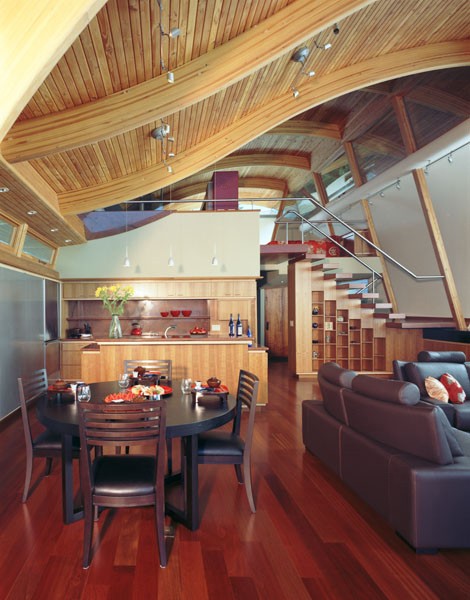
Fennell Boat - Cameron Neilson / Via oshatz.com
6. Underwater Homes
After looking at homes floating on water, we wondered if homes could be built under water other than in science fiction films. The answer is a qualified "yes", but only we could one find for now. It seems to be because of issues managing air pressure at different water depths. Nevertheless, here's the first truly underwater home you can buy.
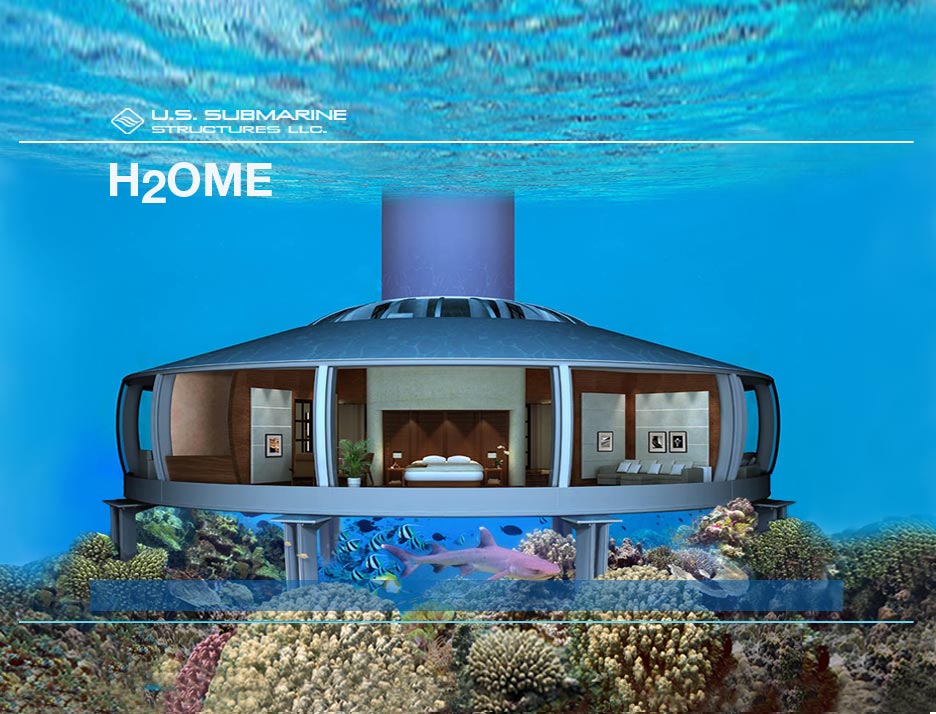
H2OME via USSubstructures.com
“H2OME” offers about 5,000 square feet of space, with luxury fittings and stunning views from every room, thanks to its panoramic windows.
It can be positioned up to 66 feet deep, causing significant difference in pressure between top and bottom. To deal with this, the lower part of the house is connected to the top via a lift in the central pillar. This clever design means the inside air pressure is equalised, so there’s no need for decompression procedures or other such complexities.
This project fascinated us, so we included it even though the only H2OME project we're aware of is a Dubai hotel. But you can buy one today, so we felt it isn’t too much of a stretch to our already elastic definitions.
Would you consider one of these anytime?
7. Treehouses
A childhood dream for many, these houses are a reality for some, and can provide whole family living. The ones we've included are a long way from anything you may have played in as a child, and contain all of the essentials for everyday living. Of all our categories of incredible homes, this is our favourite.
Nominated: 4Treehouse, Canada
Lukasz Kos is an award winning architect who says he tries to “examine the intersection between abstract tectonics and formal expression”.
As his career has progressed, he’s become renowned for some stunning work around the world. But he’s most widely recognised in architecture circles for the 4Treehouse he created at the age of 24.
The trees holding the treehouse up do so via a cable connected through a reinforced puncture, and so the whole house swings in the breeze. We love it, and hope you do too.
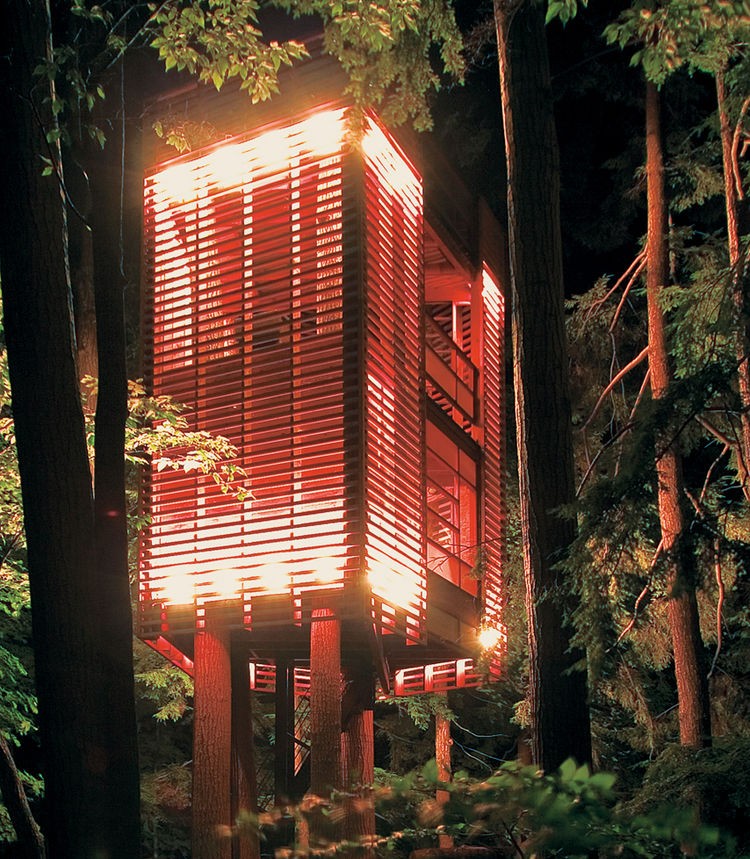
4 Treehouse © Lukasz Kos
Honourable Mention: Minister’s Treehouse, US
We couldn't technically include this because it was shut by the authorities who declared it a fire hazard. But we had to mention the world’s tallest treehouse, which even has its own chapel.
It was created by Church Minister, Horace Burgess, who says God told him to. Built around 9 trees, it has 80 rooms spread over 10,000 square feet, and at 97 feet tall it causes jaws to drop.

Minister Treehouse via facebook.com
Winner: Finca Bellavista Treehouse Commune, Costa Rica
We selected our winner because when looking for a treehouse to nominate, we were astounded to discover a whole community in a set of trees in Costa Rica.
We were particularly tickled by the choice faced by new occupants at Finca Bellavista: they have to choose whether they're going to “Stay & Play” or “Live & Grow”, and sign up for their plot of land accordingly.
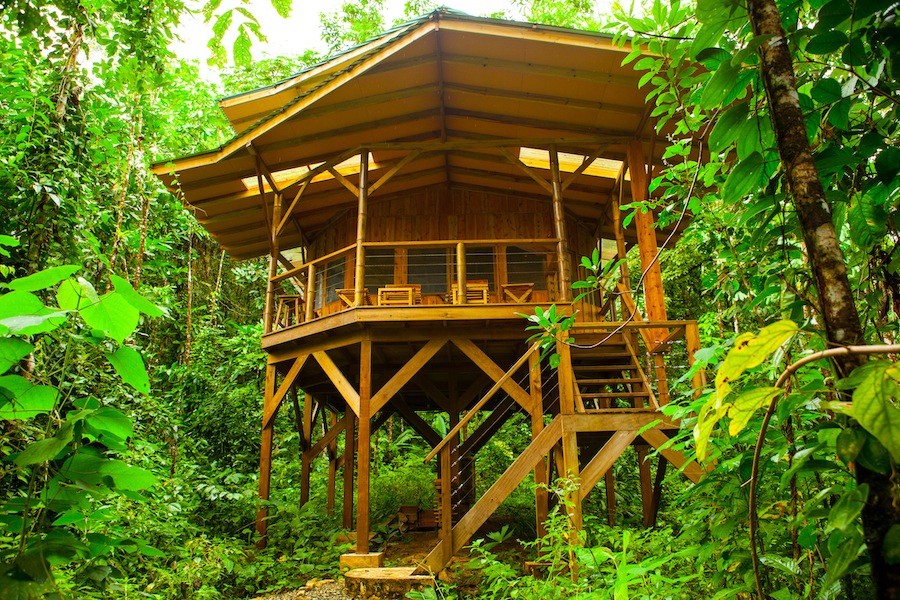
Finca Bellavista Treehouses © James Lozeau via fincabellavista.com
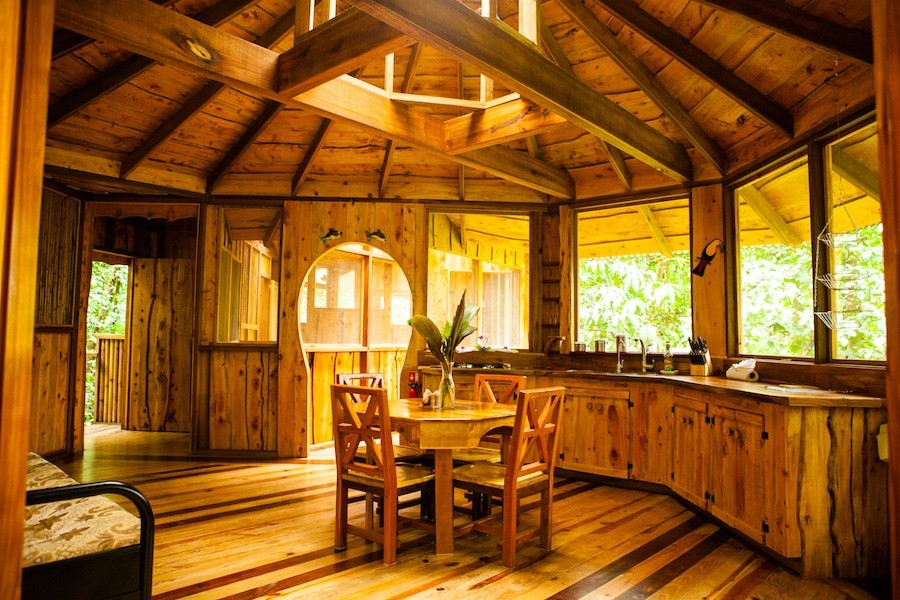
Finca Bellavista Treehouses © James Lozeau via fincabellavista.com
8. Sustainable Homes
Sustainable homes mean more than just having a solar panel. Here are 4 that show what it really means.
Nominated: Bioclimatic House, France
This home is a bio-climatic solar house in Eastern France. It's designed as a three-dimensional sundial that keeps temperatures cool during the summer, and warms the living space in autumn, winter and spring.
Nominated: Hanham Hall, UK
Hanham Hall is a housing community of 185 incredible homes in the South West of England. It has been a repeated winner of sustainable awards, something the owners are very proud of.
It has been built to a zero carbon standard, with solar panels and low energy lighting in every house. Water harvesting facilities supply rainwater to washing machines and toilets, bikes are virtually de rigueur, with plentiful storage units and nearby cycle routes to Bristol, and there are 10 acres of allotments.
Hanham Hall is run by its residents, who own shares in a community interest company set up to manage the buildings and grounds

Hanham sustainable homes via barattdevelopments.com
Honourable Mention: This Waste Home, UK
We like what the University of Brighton says about this project on their campus in the South of the UK.
"There is no such thing as waste, just stuff in the wrong place."
It is built completely out of a variety of waste materials recovered for the project. These include, but are not limited to, VHS tapes, chalk waste, bicycle tubes, toothbrushes, jeans and floppy discs.
There’s definitely a lesson here, but what it is and how to apply it could be a lively debate!
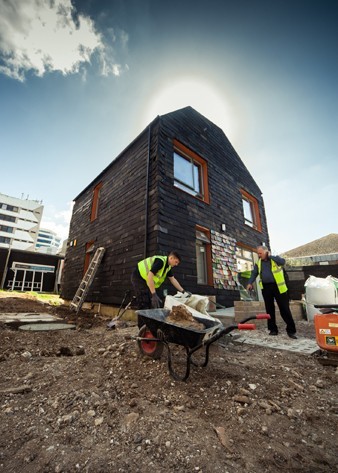
Waste House, University of Brighton © BBM Sustainable Design Ltd
Winner: The Cave House, USA
The 2,980 sq ft (277 sq m) home has no water, cooling, or heating bills, thanks to a natural spring and a really efficient pellet fireplace.
The cave wasn't naturally formed; it was blasted out by a specialist in the mid-80s. So as an underground and sustainable home it's the best of two worlds!
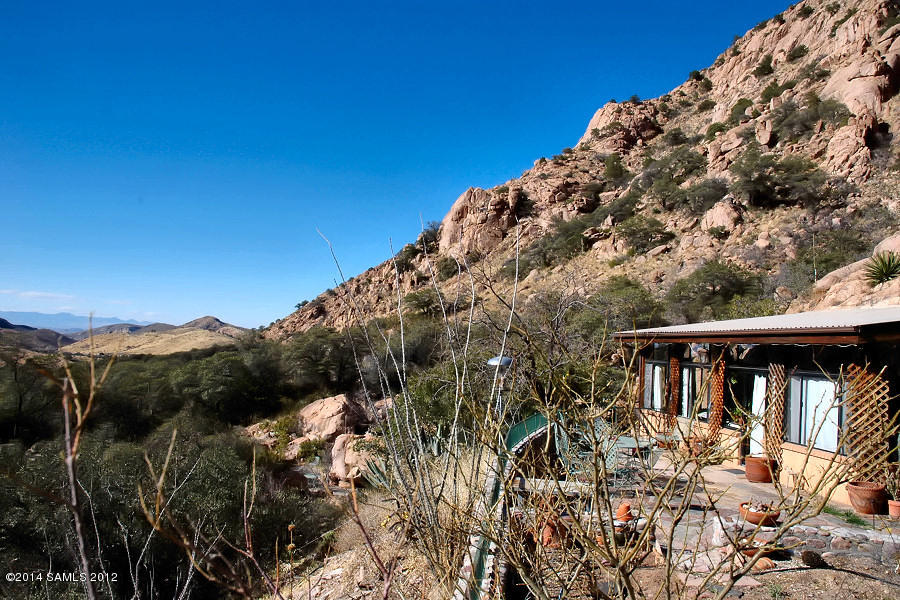
Cavehouse, Arizona via southeastarizonaidx.com/
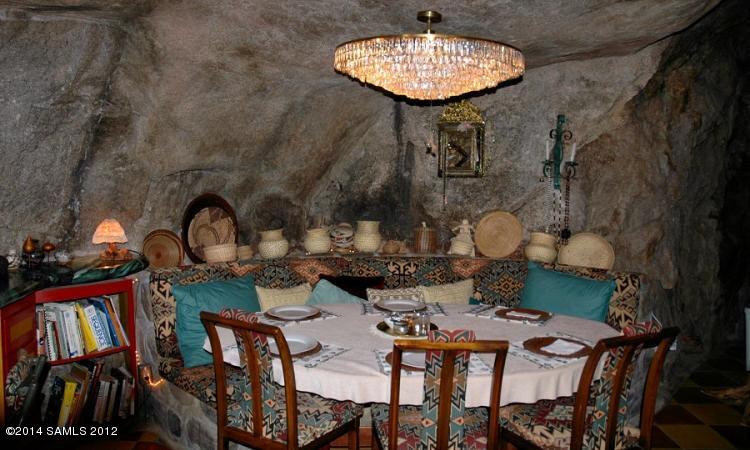
The inside of the cavehouse via southeastarizonaidx.com/
9. Special Awards
Special Award 1: Upside Down Home
There's a set of people out there who choose to build incredible homes in the form upside down houses, presumably to flip our perspective on something as sacred as the home. Their constructions are usually works of art, not meant to be lived in. But we thought they deserved a mention anyway.
There are surprisingly many examples across the world, so you can take your pick. The one we've chosen isn't just a piece of art, but happens to be one of the few you can actually live in!
Special Award 2: Lego Home
This house is made using Lego, the popular children's plastic toy bricks. It's not around any more, and was only built as a bit of fun house, but we thought you should see what it was.
The project was led by British TV presenter James May, and built by 1,000 volunteers. It used 3.2 million plastic bricks, and included a Lego sink, shower, toilet, chairs, bed, and even bedroom slippers!
All of this was apparently fully functional, and James May tested this by staying overnight. You can see for yourself in Steve Wooding's photo report below on the project during construction.
Sadly, the house was knocked down later because the folks who provided the space needed it back. But we're sure it was great fun while it lasted!
That brings us to the end of our list of incredible homes. They may not motivate you to consider anything quite so strange for the next home you consider, but may change your perspective on how you see it 🙂



